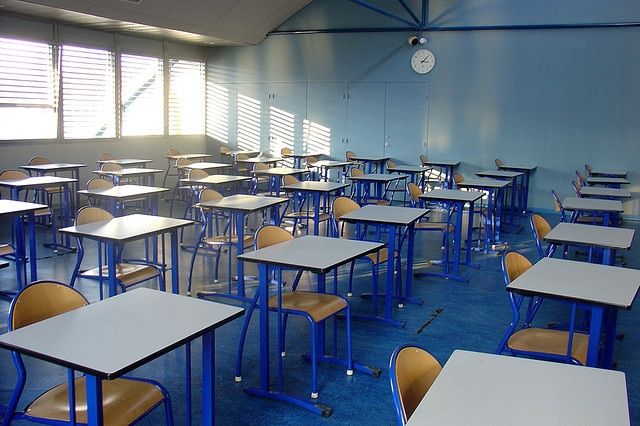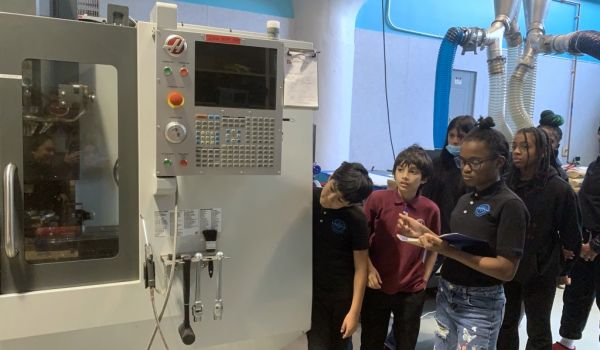Imagine a 5-year-old on the first day of kindergarten: Dressed in new fall clothes, with a spic-and-span lunch box and Toy Story backpack, ready to head to school — which, if one of the 3,400 students enrolled in Pennsylvania Virtual Charter School, is likely the kitchen table.
Pennsylvania is a pioneer of virtual charters — schools without buildings, with courses delivered online to students in grades K through 12 — which have grown nationally from almost zero students in 2000 to more than 100,000 today.
One imagines rural homeschoolers using the virtual charters as extensions of the programs by mail they may have been using for decades. But this spring, urban districts in New Jersey, North Carolina and Florida rejected applications for virtual charter schools, all affiliated with the for-profit education company K12 Inc.
In Newark, N.J., K12 had been trying to fill 850 spots this fall for its New Jersey Virtual Academy Charter School. But two weeks ago, the state Department of Education failed to approve the school’s charter application. Two “blended online learning” charter schools, which operate in buildings with teachers, will be allowed to open in Newark this fall, along with seven other more traditional charter schools throughout the state.
The DOE recommended another planning year for the wholly virtual school, in the face of a letter of protest sent by eight education advocacy groups, including the Newark-based Education Law Center (ELC) and the New Jersey Education Association, the state teachers’ union.
The groups argue that charter schools with no buildings and no opportunity for classroom accountability do not conform with New Jersey law governing charters — and that they do a poor job of educating. “They don’t have a track record,” said Stan Karp, director of the secondary reform project at the ELC. “The graduation rates in Pennsylvania and Ohio are very poor.”
A report published last month by the National Education Policy Center in Boulder, Colo. found that the schools operated by K12 — which is not only the largest virtual charter operator in the country, but the largest privately held education management organization, in terms of students enrolled — performed far worse on measures of student progress and learning than traditional public schools. (Breaking it down, 27 percent versus 52 percent made annual yearly progress, while average math scores were 14-36 percentage points lower and graduation rates were 49 percent versus 79 percent in comparison.) These poor showings come despite the fact that the online schools enroll fewer poor children or children with disabilities.
K12 responded by saying that the NEPC report used inaccurate comparisons to determine these rates, and argued that students enrolled in their virtual charters in some states perform better than comparison groups and are not “falling behind.” NEPC researchers claim their data supports the conclusion that K12’s methods lead to poor student outcomes overall, but that determining whether students are in fact getting worse while enrolled in K12 schools, hence “falling behind,” may require more research. Graduation rates remain undisputed.
So who are these schools for?
In Newark, where a third of residents live in poverty, the majority of households are single-parent headed, and parents need to work, the home schooling movement is not exactly thriving. What kind of market then exists for schools without buildings, with computer-based lessons and teachers accessible via email?
Charter schools as a broad category have found receptive governments and families in urban America, where deep intergenerational poverty has left school systems failing and searching for a new model. Yet many of these charters have adopted highly place-based educational theories that, contrary to the virtual school model, rely on a physical location to breed ties between the community and the school that educators hope will lead to higher levels of student achievement. In Newark and cities like it, school buildings increasingly serve as anchoring community hubs with multiple uses and roles, providing gymnasiums for community teams in need of places to practice, family-friendly space for community health clinics or auditoriums for neighborhood meetings.
What would happen to struggling cities if school buildings themselves became endangered spaces? My neighborhood in Jersey City is dotted with schools, private, parochial, public and charter: There are four within as many blocks, not including the local college, which dominates our patch of real estate. Without them, we would have gaping holes in the streetscape, fewer places for parent or community meetings and dramatically reduced foot traffic — or any traffic, one unanticipated benefit perhaps, of going virtual.
The placeless nature of a virtual school means that resources once tied to a particular geography — a neighborhood school on a public street— are being rerouted into cyberspace. Taxpayer money, instead of going toward maintenance of a school facility or local staff, pays for technology and a remote staff. The risk for cities is that if a strong market for online charters develops, driven perhaps by the lure of technology, brick-and-mortar schools that anchor neighborhoods stand to lose money and resources. No one needs to be reminded that cities like Newark have no need for any more underused or unmaintained buildings.
Given their poor results and uncertain potential, a cynic might say that K12 is targeting cities mainly because the operators see a market, since struggling urban districts are more welcoming to charters. “This is being fast tracked in districts where commercial enterprises see opportunity to do a kindergarten through twelfth grade version of Univesity of Phoenix,” said Karp, referring to the for-profit, blended online learning university, which boasts similarly poor graduation rates and has been criticized for targeting low-income students, often in cities.
K12 stock is publicly traded and reports sales growth of 36 percent last year. At present, the company seems better positioned to help the growth of investors than children.

Carly Berwick writes about education and culture for Next City, as well as The New York Times, ARTnews, and other publications.



_(1)_600_350_80_s_c1.JPG)







